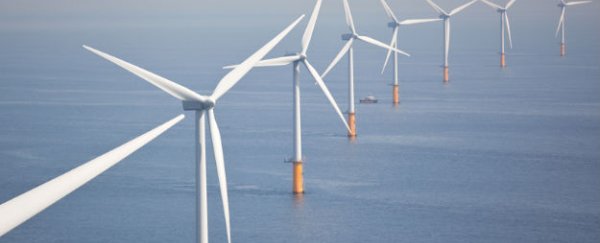New superconductor-powered wind turbines could be installed off the coast of Australia within the next five years to finally take advantage of the country's 35,000 km of coastline, which offers up some of the best wind resources in the world.
Developed by a team at the Institute for Superconducting and Electronic Materials at the University of Wollongong in New South Wales, the wind turbines are a significant improvement on current technology. Right now, wind turbines cost about $15 million each to construct, and are super-heavy and tough to ship. They also require a whole lot of maintenance because they're run using a complex, heavy, and costly piece of machinery called a gear box.
"In our design there is no gear box, which right away reduces the size and weight by 40 percent," said lead researcher and materials scientist Shahriar Hossain. "We are developing a magnesium diboride superconducting coil to replace the gear box. This will capture the wind energy and convert it into electricity without any power loss, and will reduce manufacturing and maintenance costs by two thirds."
Superconductors are a class of materials that have been getting a lot of attention this year due to their potential to completely revolutionise power systems and batteries as we know them. Right now, these systems generate power by running an electric current through a copper conduction loop, but during this process up to 10 percent of the energy is lost due to resistance. This, and the fact that the copper wire decays quickly, means our current power systems are relatively inefficient with short lifespans.
But superconducting materials generate no electrical resistance, which means they're able to store electricity with no loss of energy. The current is also able to circulate over and over indefinitely, even if power is turned off. The Australian team is making their superconducting coil out of magnesium and boron, both of which are cheap, durable and easy to make.
The team estimates that their superconductor wind turbines will cost just $3-5 million each to build, because by next year, the magnesium diboride coil will cost just $1 per metre to manufacture.
"Australia desperately needs sustainable energy sources. Wind is cheap, clean and we can get it on rainy and sunny days," he said. "And considering Australia has more than 35,000 km of coastline, there is ample room for offshore wind farms. With industry support, we could install superconducting offshore wind turbines off the coast of Australia in five years, no problem."
Here's Hossain talking about their research:

